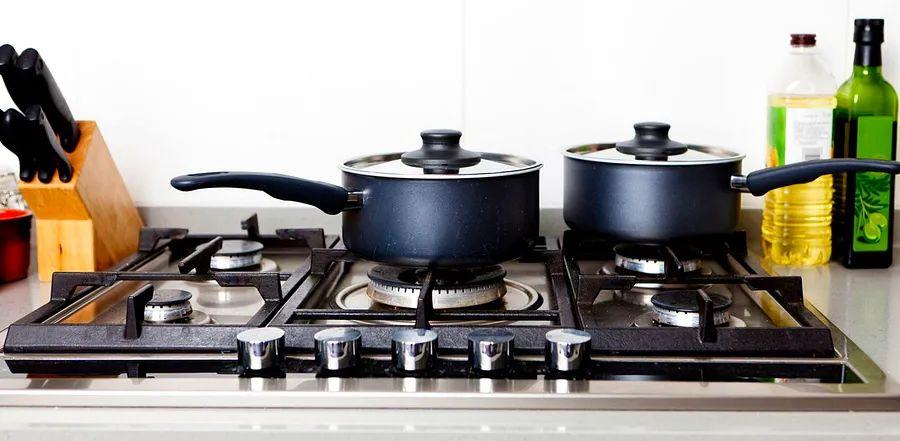Gas, Electric, and Induction Stovetops: A Comprehensive Comparison

Stoves, the essential kitchen companion, have been the center of much debate lately. Some advocate for banning specific stove types, while others push for subsidies to promote alternative options.
To fully understand the ongoing conversation and decide where you stand, it's crucial to first learn about the different stove types. In this guide, we'll explore the three main varieties—gas, electric, and induction—and delve into the advantages of each.
What Defines a Gas Stove?
The classic image of a stove likely involves a gas model. The key characteristic of a gas stovetop is its open flame, which directly heats the pan from underneath. This stove type is connected to a gas line that supplies fuel to the flame, regulating the heat intensity.
Advantages of a Gas Stove
- Instantaneous Heat. One of the reasons gas stoves are so popular is that the heat is instantaneous. With just a switch of a knob, you can go from no heat to full heat immediately.
- Quick Removal of Heat. Likewise, when you’re done cooking you can shut off the entire heat source right away. This level of responsiveness allows cooks to dial in the exact amount of heat that’s right for the task at hand. This precise control and ability to provide a consistent level of heat can help to ensure uniform cooking.
- Direct Charring. A gas stove can be used like a gas grill, providing direct charring for items like peppers and eggplant, something you’re not able to achieve on an electric or induction stove.
What Is an Electric Stove?
In contrast to gas stoves, which use grates over burners, electric stoves usually feature a smooth cooking surface made from a ceramic-glass composite. Rather than an open flame, they rely on heated metal coils to transfer heat to your cookware.
Unlike gas stoves, electric models don’t heat up or cool down immediately. The coils may take time to reach their full temperature and will retain heat even after the stove is turned off. This is why many recipes instruct you to “remove the pan from the heat” instead of simply “turn off the heat,” as electric stoves tend to stay hot longer.
Advantages of an Electric Stove
- Potentially More Environmentally-Friendly. Because electric stoves don't run on methane, they don’t pollute the air as much as gas stoves do.
- Stovetop Doubles as Counter Space. When not in use, the flat-top surface of an electric stove can double as useful counter space, which is especially helpful in smaller kitchens.
- Easier Cleaning. To clean a gas stove, the grates have to be removed and the surface requires more twists and turns to clean. With an electric range, the flat surface just needs a quick wipe down.
What Is an Induction Stove?
Induction stoves are a unique type of electric stove that use electromagnetic energy to heat the cookware directly, unlike traditional electric and gas stoves, which rely on heating elements or flames to indirectly heat the pan.
Advantages of an Induction Stove
- Efficient Heat Transfer. By using electromagnetism, induction stoves are able to more efficiently transfer heat compared to both electric and gas stoves. The result is that cookware heats up faster on induction stoves.
- Surface Never Gets Hot. Since induction stoves use electromagnetism, the surface of the stove never gets hot. You could place your hand directly on top of a “hot” stove and it would feel cool to the touch and you wouldn’t risk burning yourself.
One drawback of induction stoves is that not all cookware is compatible. Most nonstick pans won't work unless they are specifically designed for induction cooking, and traditional carbon steel woks may not sit flat on the stove’s surface. However, standard cast iron and stainless steel cookware work perfectly fine.
Additionally, induction stoves tend to be pricier than their gas and electric counterparts, though prices are dropping and rebates are available to make them more affordable. For those looking for a more budget-friendly option, portable induction stoves offer a great alternative without the high cost.
Which Stove Fits Your Needs Best?
Now that you’re familiar with the various stovetop options, the next question is: which one suits you best? Each type has its advantages and drawbacks, so it’s important to consider your priorities. Gas stoves are typically more affordable and favored by professional chefs and dedicated home cooks, but they come with environmental concerns. Electric stoves are easy to use, ideal for smaller spaces, but may require a shift in your cooking style. Induction stoves, though still on the expensive side with limited options, combine some of the best features of both gas and electric stoves, offering cutting-edge benefits.

1

2

3

4

5
Evaluation :
5/5